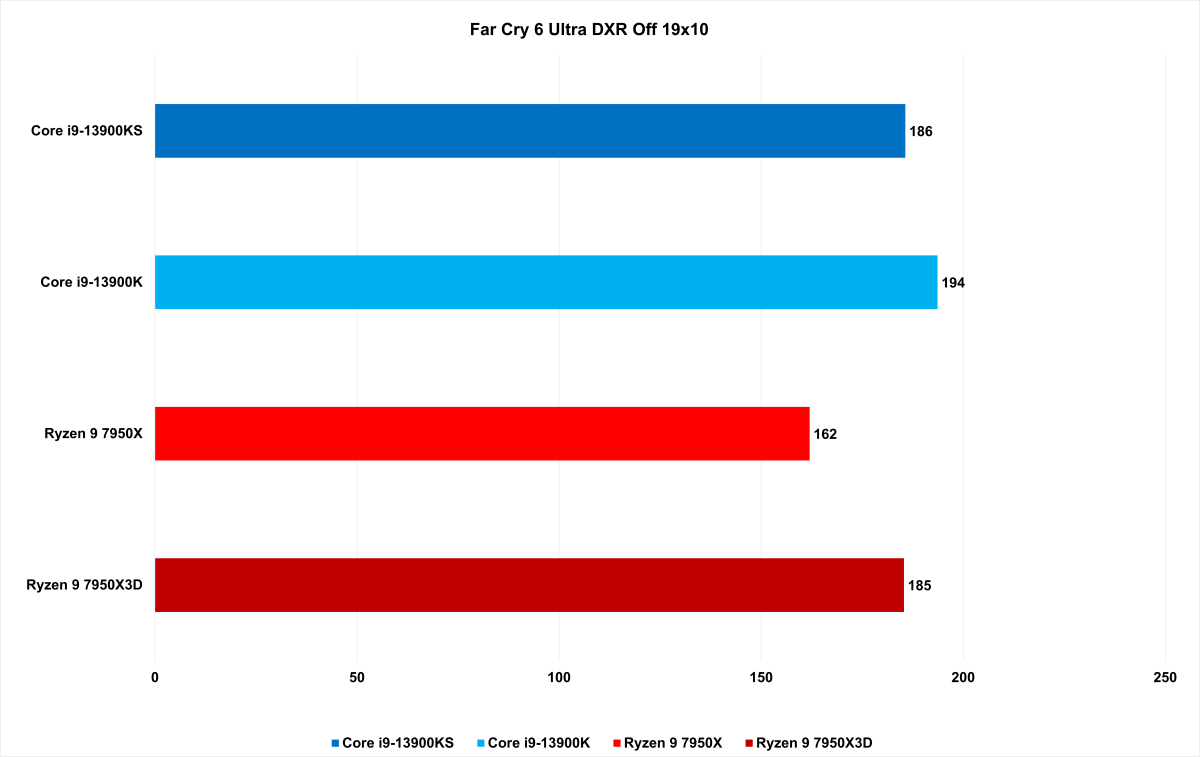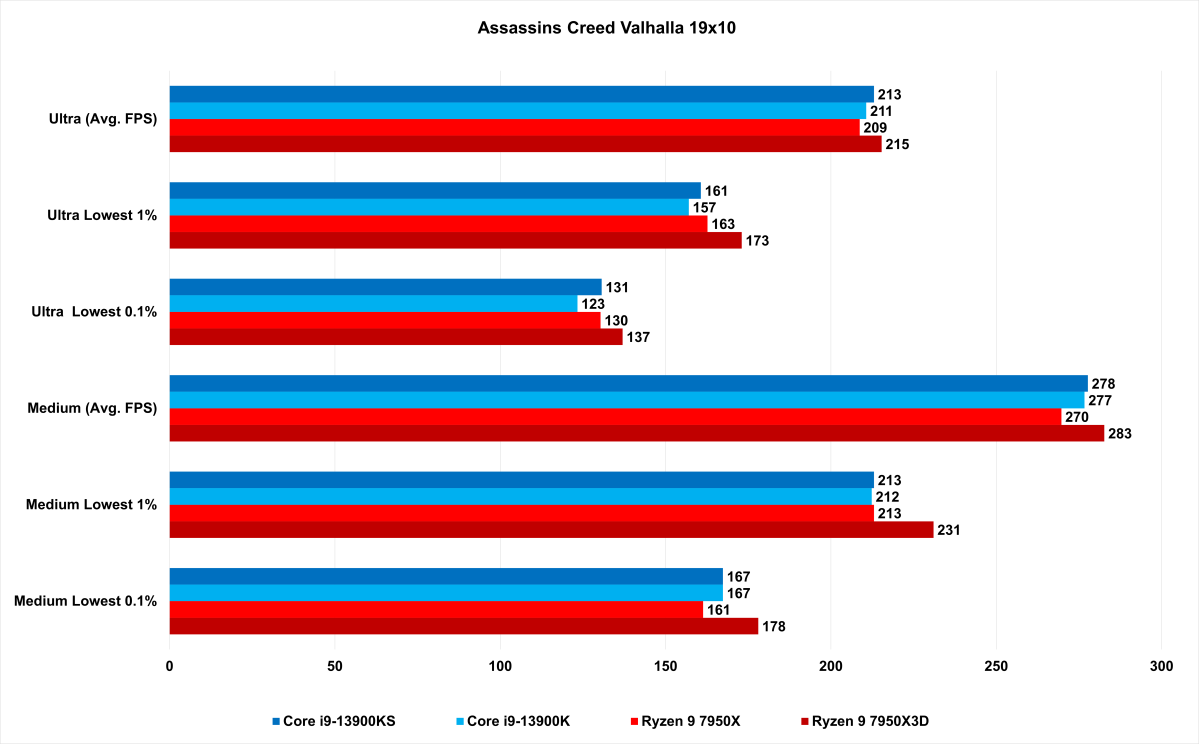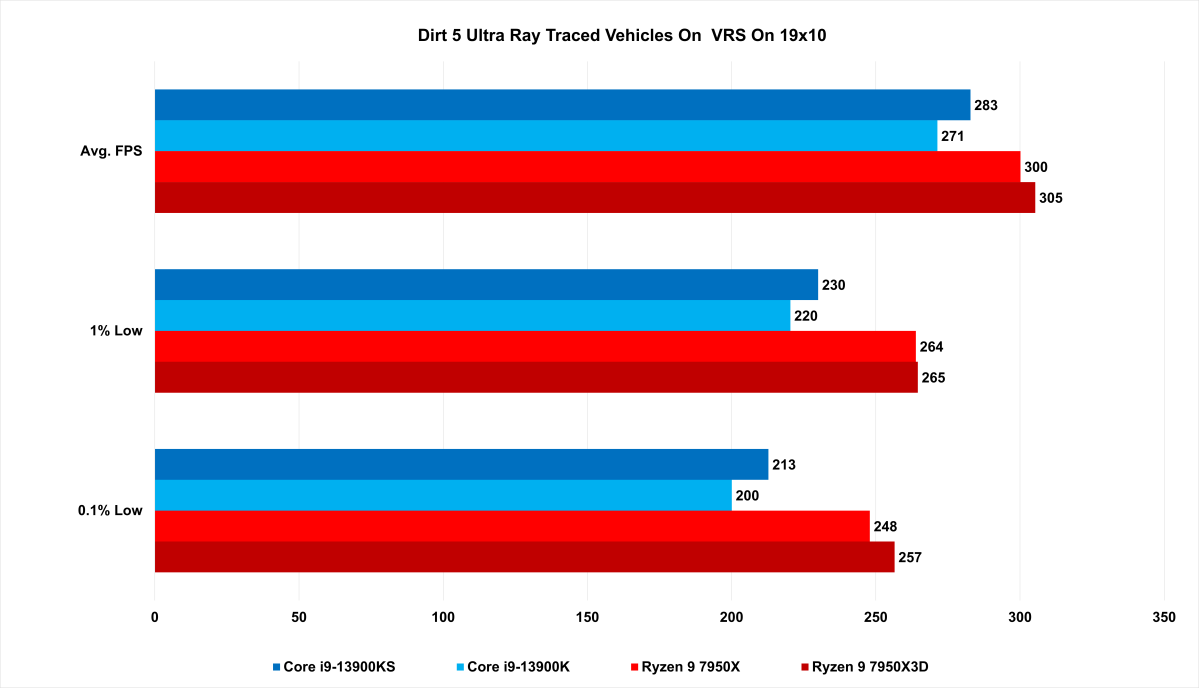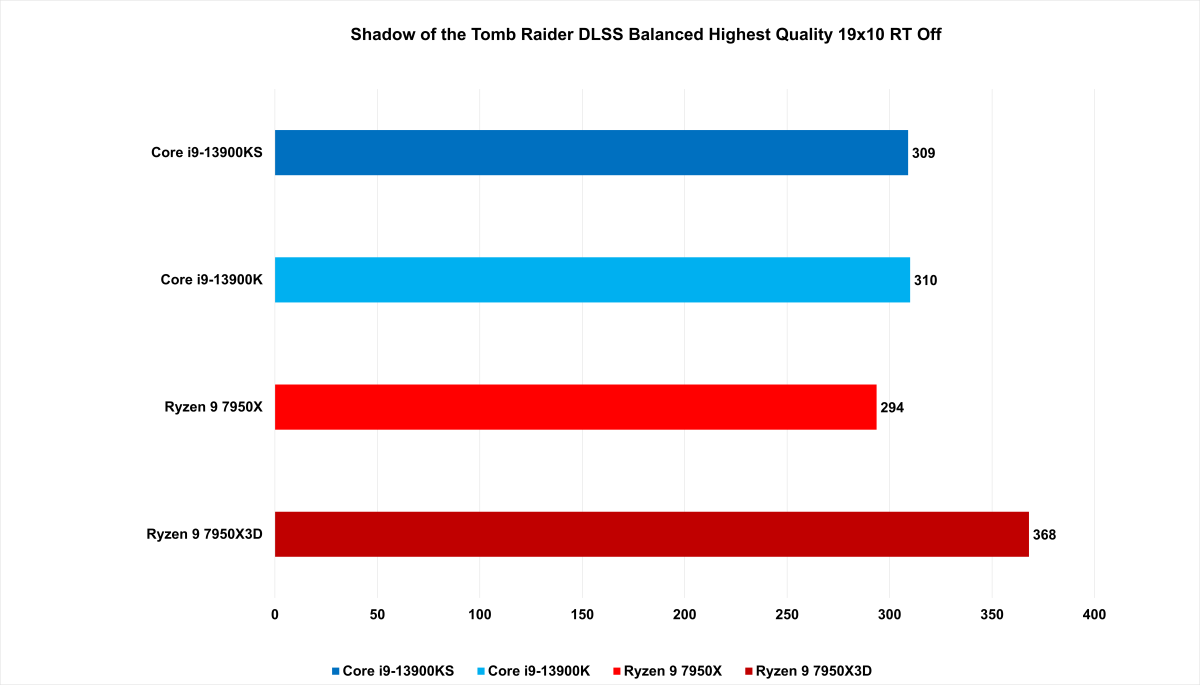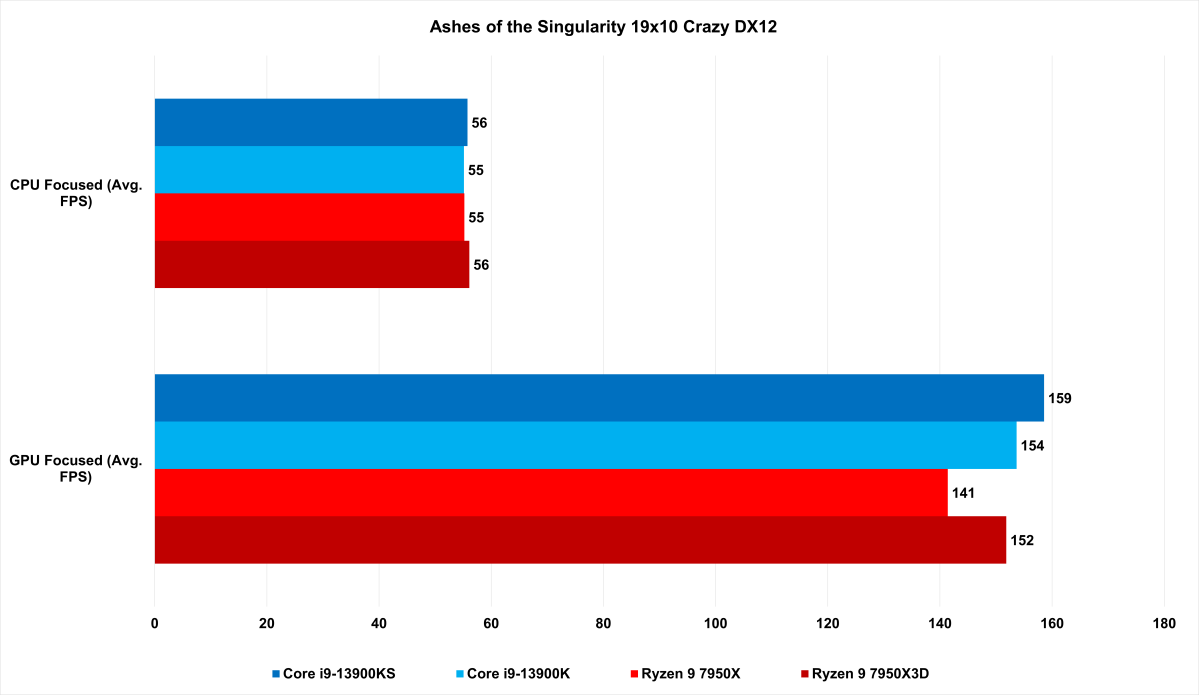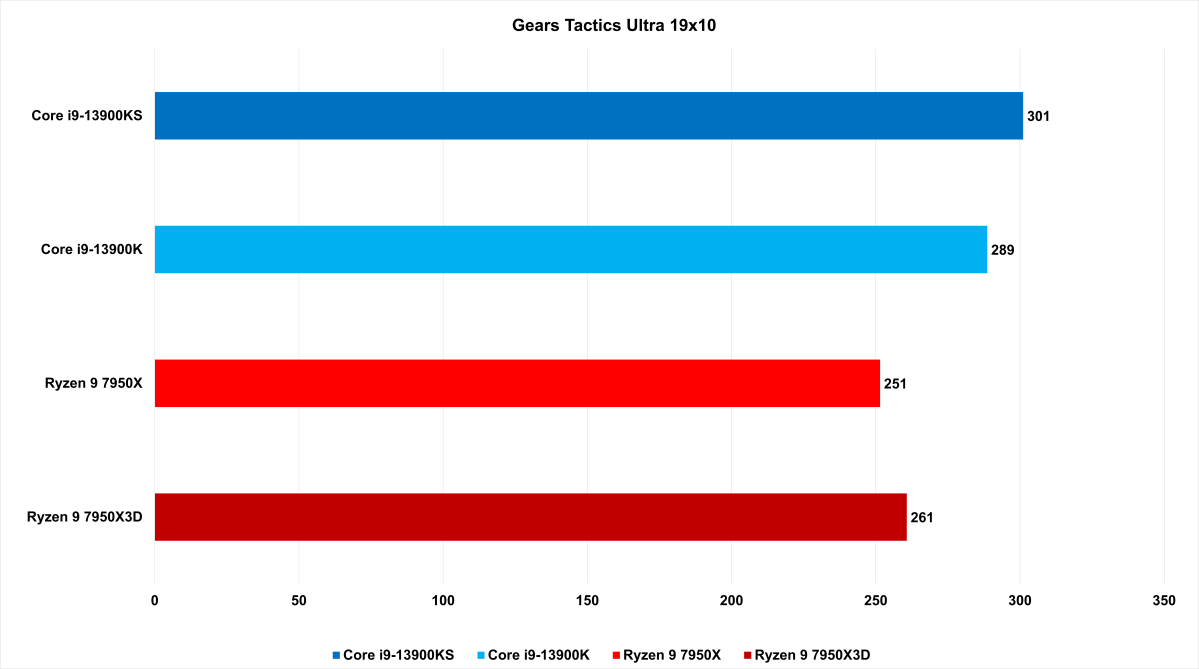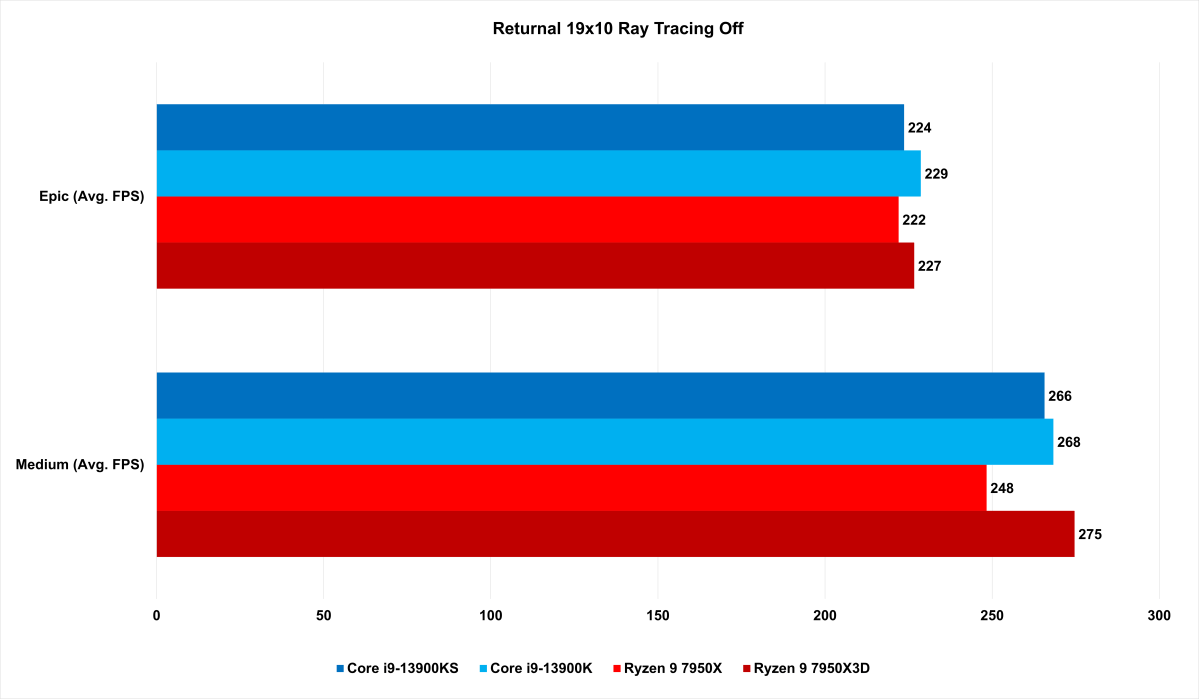In recent years, two has been a good number for AMD. More specifically—the second generation of its CPU architectures. What the company begins in the first gen, it pushes forward in some substantial way in the next round. We saw this during the company’s comeback on desktop, and then its surge forward on laptops. Now Team Red’s doing the same with its innovative 3D V-Cache offerings.
The Ryzen 7 5800X3D, AMD’s first 3D V-Cache processor, launched last summer. Layered with additional L3 cache, it was a gaming monster, but limited to the single 8-core offering. When AMD’s own Ryzen 7000 series chips and Intel’s impressive 13th-generation Raptor Lake parts launched last fall, the 5800X3D still held its own against them in games, but lagged significantly in workstation tasks that lean heavily on more cores.
Now AMD has released 3D V-Cache versions of its modern Ryzen 7000 CPUs, expanding to three different SKUs: the 8-core $449 Ryzen 7 7800X3D (launching April 6), 12-core $599 Ryzen 9 7900X3D, and the flagship $699 Ryzen 9 7950X3D we’re testing today. (The Ryzen 9 7900X3D and 7950X3D chips launch on February 28.) And since their announcement, everyone’s wanted to know: Is the 16-core, 32-thread 7950X3D the gaming monster we were expecting? The answer is yes…but a qualified yes.
You can read more technical details about these CPUs in our write-up about their initial reveal (plus watch our interview with AMD at CES about them), but we’re here to spill the details of our hands-on time with the flagship part. The deep dives are in our YouTube videos, which cover the full gamut of our benchmarks—including web browser and Microsoft Office performance—but for the biggest takeaways, read on.
The AMD Ryzen 9 7950X3D offers ample gaming and productivity firepower alike.
This chip is definitely good in games
If the 7950X3D is your first exposure to a processor with AMD’s 3D V-Cache, you might glance at a benchmark like Cinebench R23 and think it’s not as good as Intel’s flagship Core i9-13900K and Core i9-13900KS. But while Cinebench R23 is one of the standard tests used to determine CPU performance, it doesn’t tell the whole story.
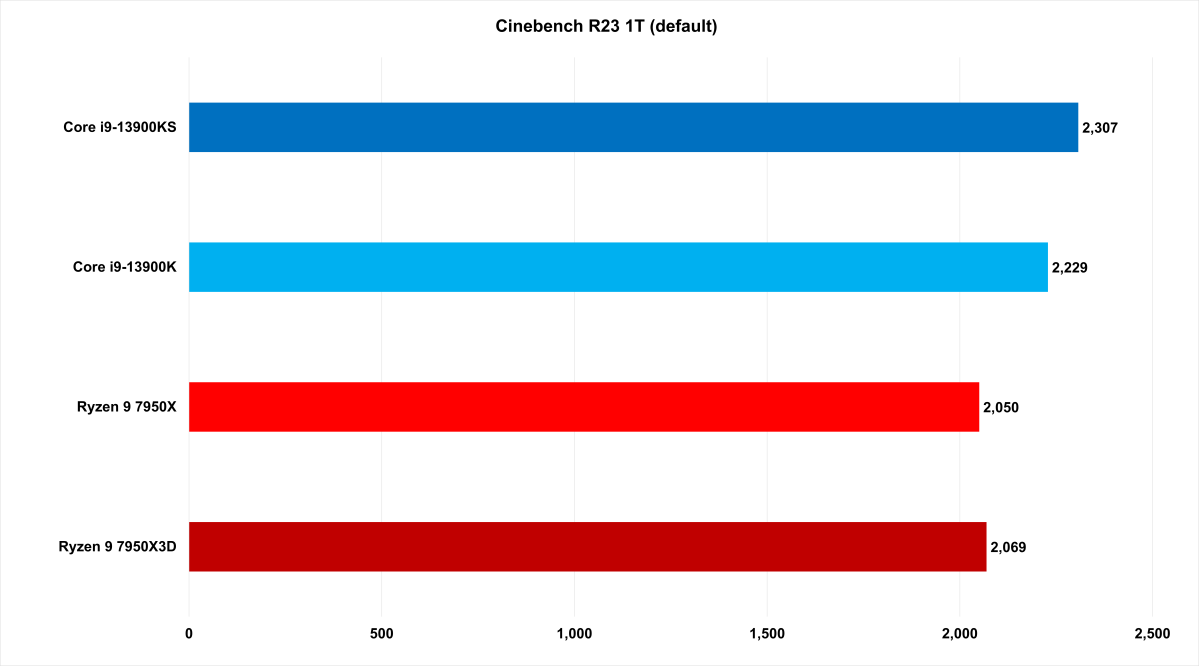
Gordon Mah Ung / PCWorld
Just this one benchmark isn’t enough information about this chip. It wouldn’t be about any processor, but with other parts we’ve reviewed, you may have sometimes seen the big bars in Cinebench (and other tests that isolate CPU performance) line up with the gaming results. That’s not the case here. In fact, even the individual game benchmarks don’t indicate a general trend, either. Not in isolation—you really need to see all the gaming test results in aggregate.
For example, take Watch Dogs Legion. On Ultra at 1080p, the AMD Ryzen 9 7950X3D offers a 28 percent uplift in performance compared to the standard 7950X. The jump up in World War Z is similarly impressive at 29 percent. This lead holds against the 13900KS and 13900K, too. In Watch Dogs Legion, the 7950X3D posted a 23 percent increase over the faster 13900KS and 25 percent over the standard 13900K. Meanwhile, in World War Z, it’s almost a 27 percent jump compared to the 13900KS and 26 percent versus the 13900K.
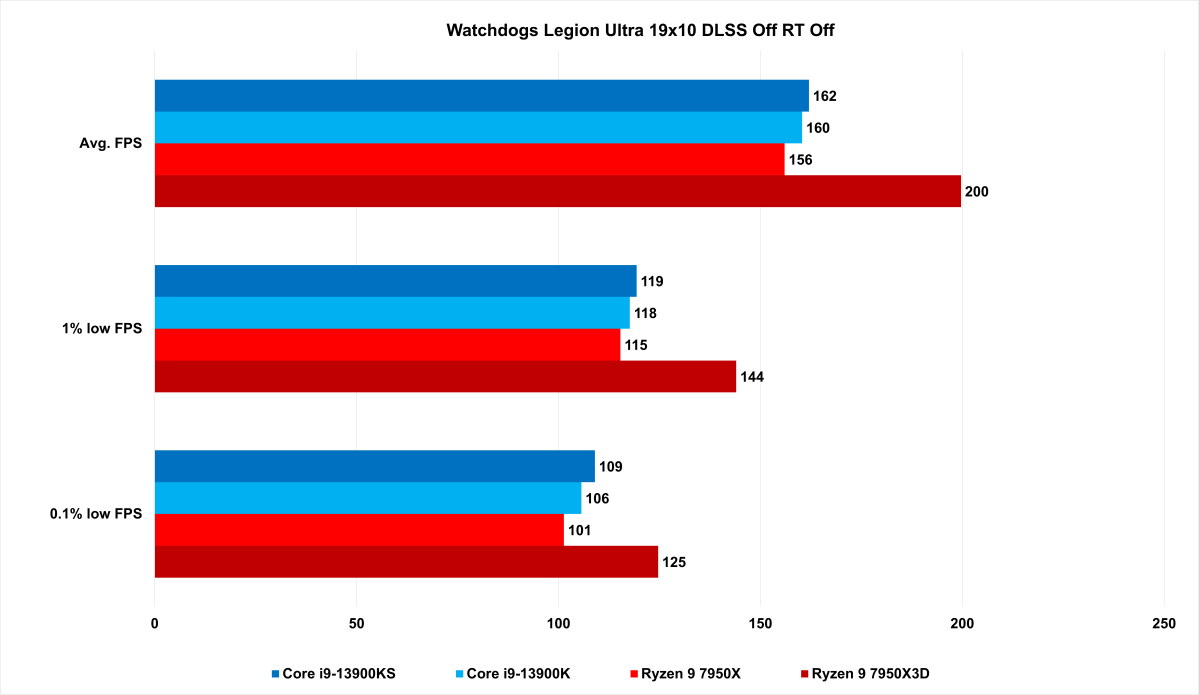
Gordon Mah Ung / PCWorld
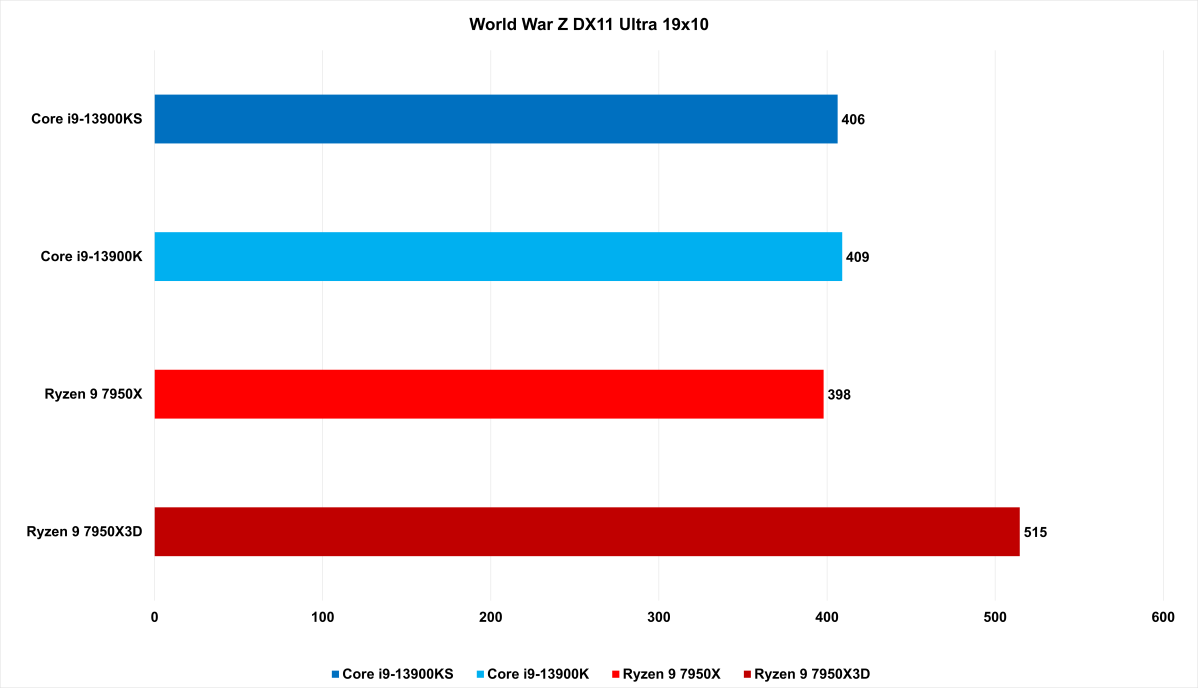
Gordon Mah Ung / PCWorld
But on the flip side, in Metro Exodus, the Ryzen 9 7950X3D drags relative to the 13900K, with a drop of almost 15 percent in performance. And in Cyberpunk 2077, it just holds its own against the 13900K and KS, but still trails the vanilla non-3D Ryzen 9 7590X part by about 4 percent.
Does this mean the 7950X3D is a failure? Heck no, look at the frames it puts out. Even in Metro Exodus, you get 142fps on Extreme at 1080p. Fiddle with settings a little and you can easily get above 144fps if you’re driving a higher refresh-rate monitor.
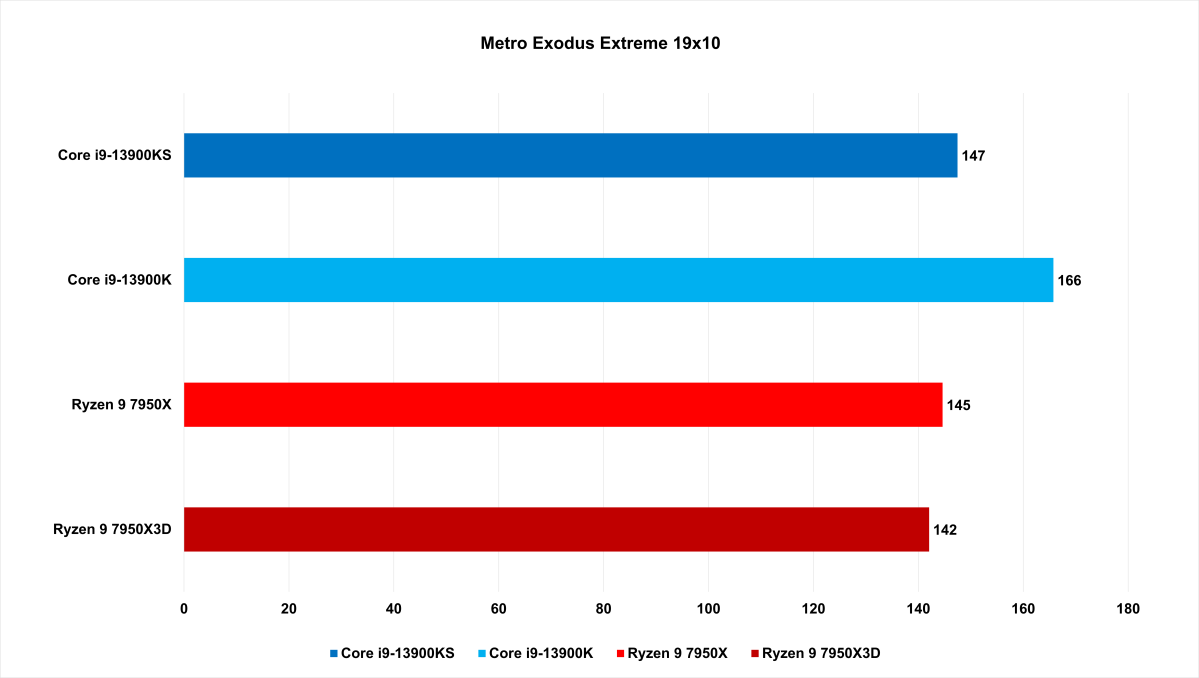
Gordon Mah Ung / PCWorld
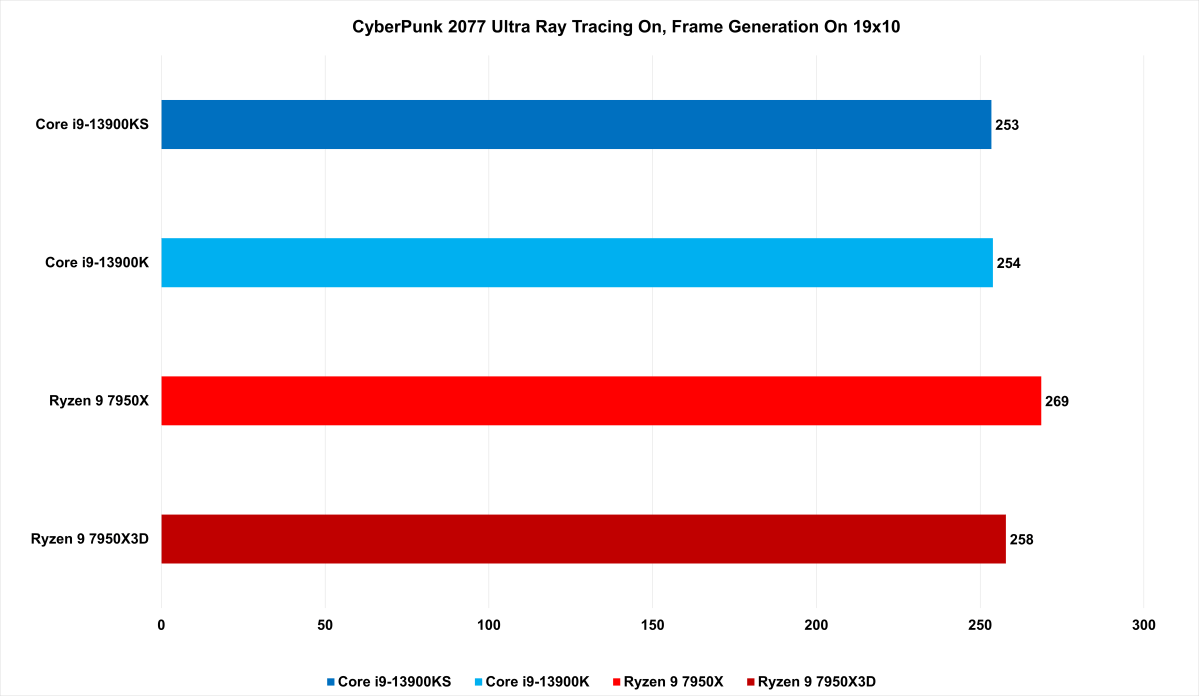
Gordon Mah Ung / PCWorld
Overall, in 7 of the 14 games we benchmarked, you’ll get a boost of 8 percent or more in performance compared to the 7950X, and almost 10 percent or more compared to the 13900K. But it also loses in six games to the 13900K—with a few of them very clear losses. So you’ll need to take stock of what kind of games you play (and at which resolutions), as well as your desired frame rates when evaluating if this chip is right for you.
Further reading: The best CPUs for gaming
It holds up in heavy multi-threaded workloads, too
Many people come into benchmarks looking for shutouts—a complete sweep on the leaderboards for a processor to qualify as good.
Like in games, the Ryzen 9 7950X3D doesn’t deliver an uncontested win in multi-threaded performance. You may actually be disappointed if you were expecting greater parity between the X and X3D parts compared to the Ryzen 5000 era. If you look at production benchmarks like Cinebench R23 and Handbrake, you’ll see the 7950X3D lag similarly behind its X counterpart as with the 5800X3D and the 5800X. The delta isn’t monumental, but among flagship CPUs, even small differences stand out.
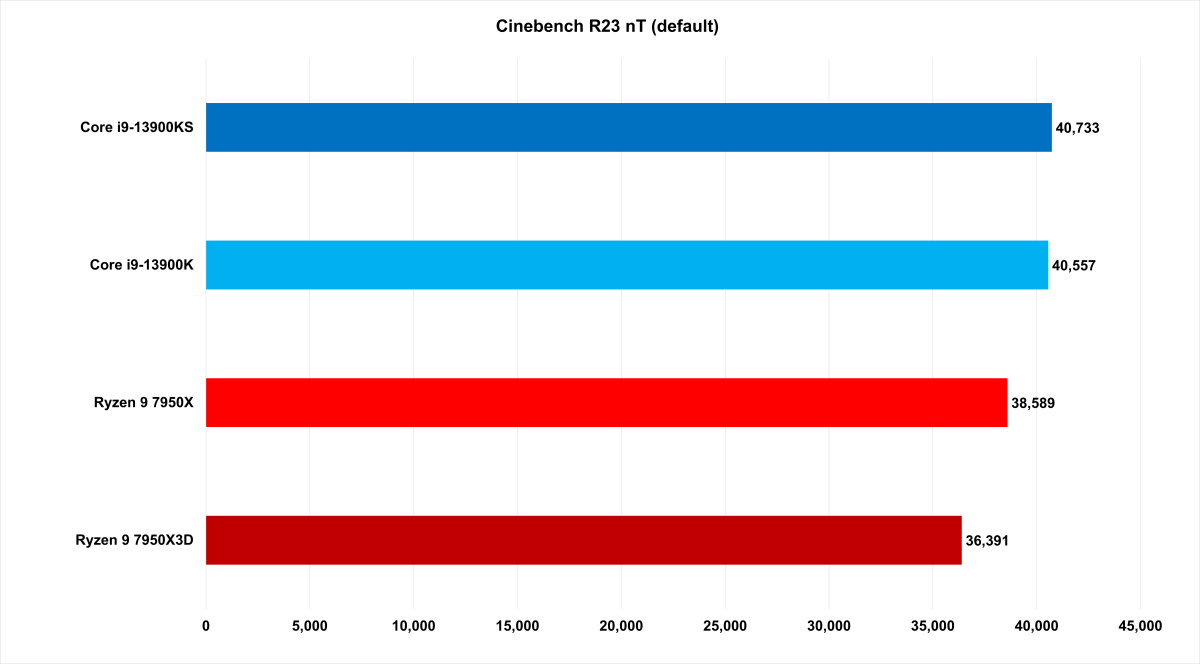
Gordon Mah Ung / PCWorld

Gordon Mah Ung / PCWorld
This repeat of history doesn’t drop the Ryzen 9 7950X3D to trash tier, though. Arguably, the more important match-up is the 7950X3D against the 13900K and the 13900KS. Those two chips carrying far more mindshare, given their reputations for top-notch gaming and multi-threaded performance.
In heavy workloads, the 7950X3D is more able to stay pace with those two Team Blue offerings. Not always—Cinebench R23 shows a gap in performance of a little over 10 percent. And there’s a notable difference in Handbrake, where the 7950X3D is over 20 percent slower. But in V-Ray’s ray-tracing benchmark and Blender’s rendering tests, the 7950X3D either edges out the 13900K and KS or pulls even.
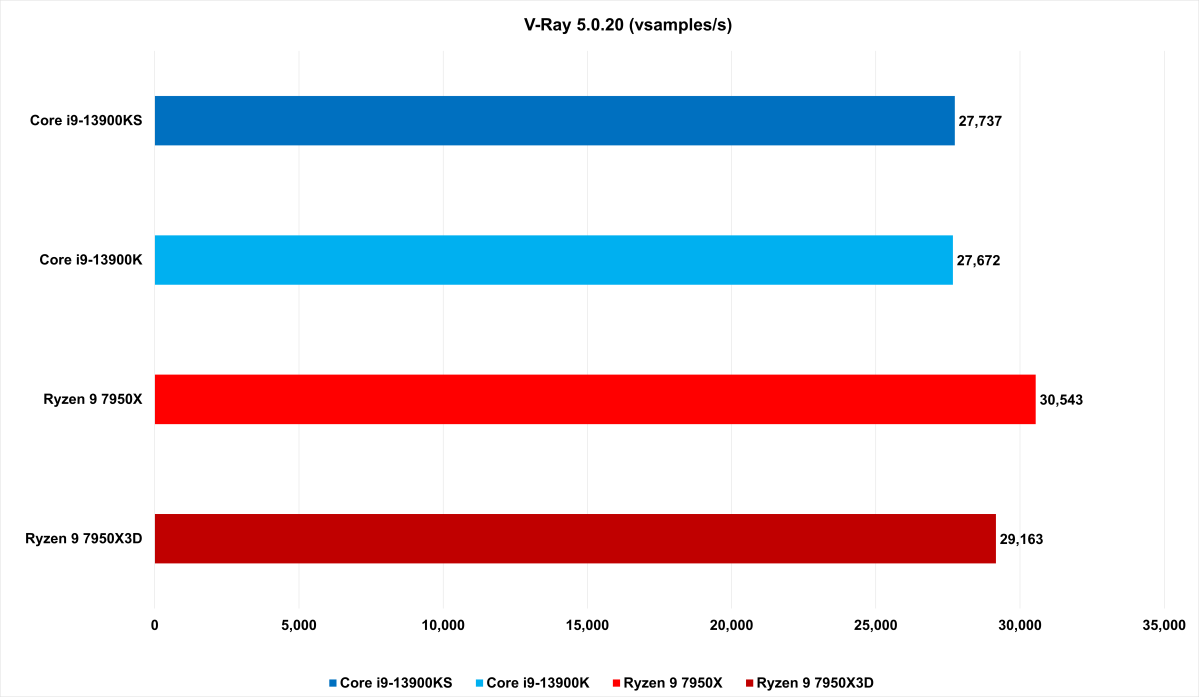
Gordon Mah Ung / PCWorld
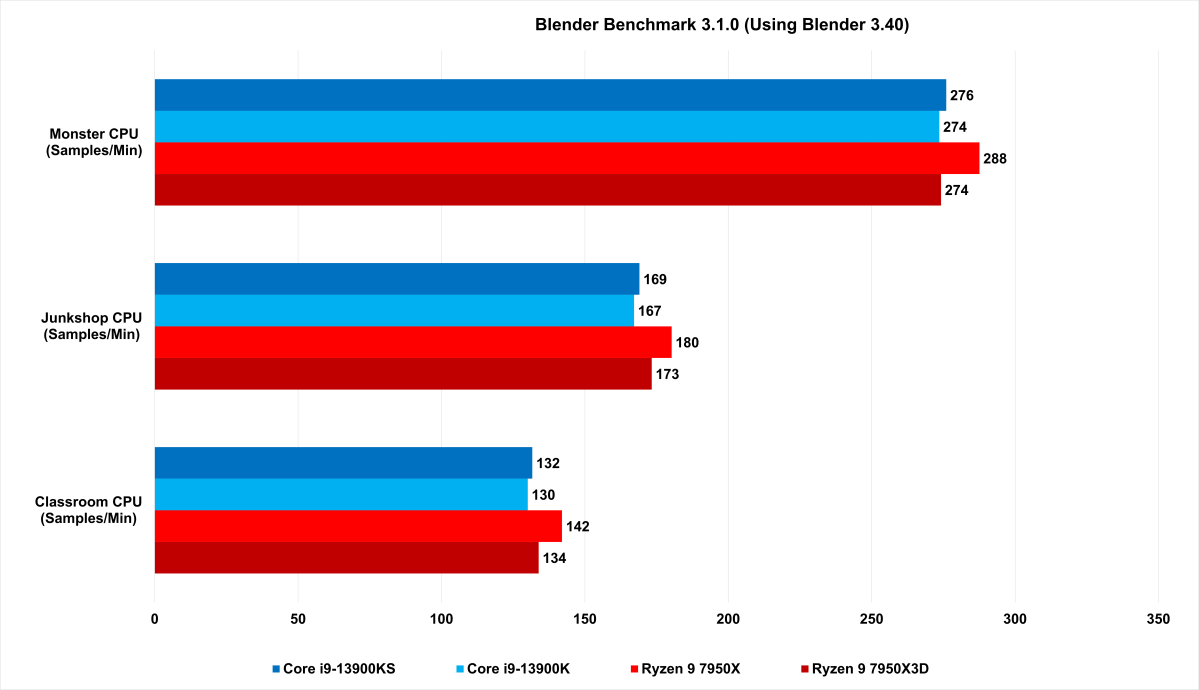
Gordon Mah Ung / PCWorld
So as with gaming, the Ryzen 9 7950X3D’s utility in production work will depend on what programs you use most.
Intel still dominates for production work
Unfortunately for AMD, Adobe’s Creative Suite is a set of apps many people use, especially those interested in a big, beefy CPU with many cores. And while few (if any) expected the Ryzen 9 7950X3D to deliver numbers that its 7950X sibling didn’t, its lower performance is tangible. In PugetBench’s Adobe Premiere Pro Standard Run benchmark, it’s a 30 percent drop in performance if you switch from a 13900K or KS to the 7950X3D.

Gordon Mah Ung / PCWorld
In PugetBench’s Adobe Photoshop test, the difference isn’t nearly so eye-watering; you’re looking at drop of almost 9 percent. It shrinks even further in Lightroom, with a roughly 3 percent gap.
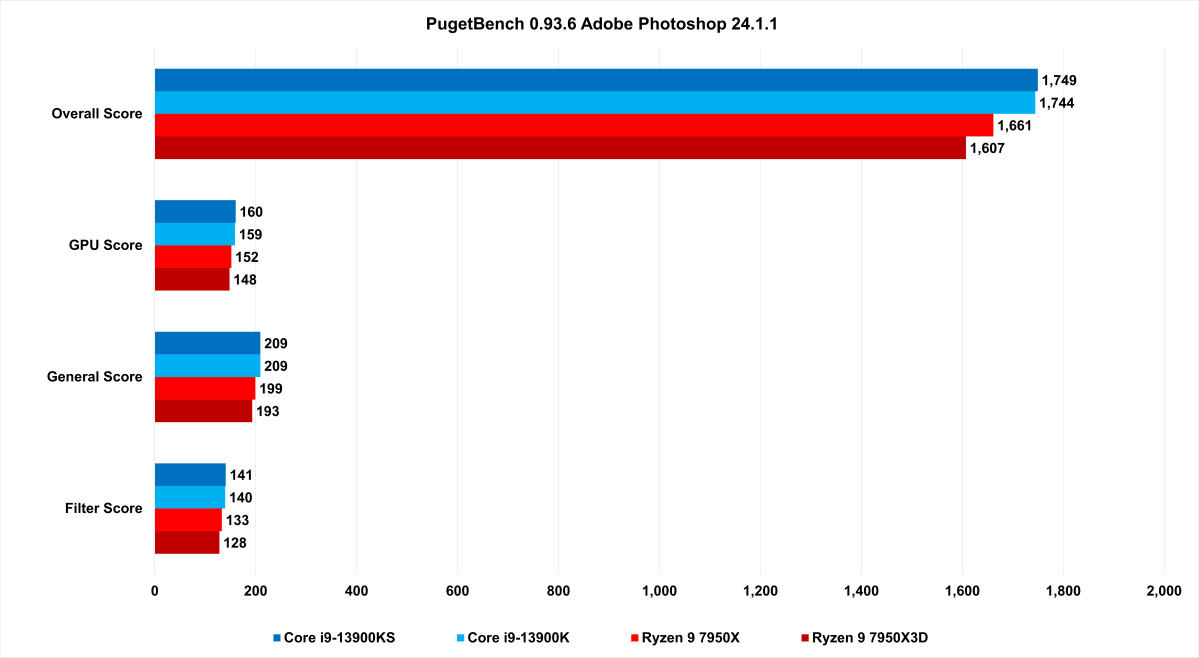
Gordon Mah Ung / PCWorld
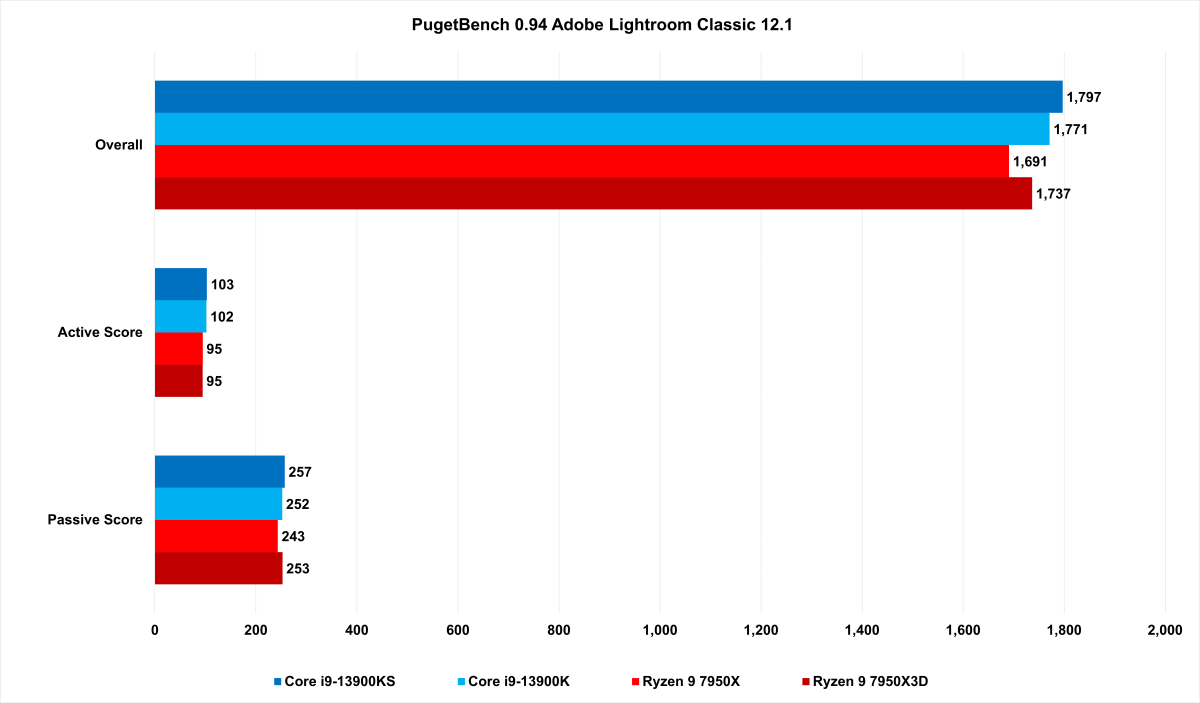
Gordon Mah Ung / PCWorld
Given its marketing as the “ultimate processor for gaming,” AMD isn’t pushing this chip as a productivity champion, but the 7950X3D is going to be a hard sell to heavy Premiere users. A processor that chews through your daily workload equally as well as it spits out tons of frames during off-hours looks a lot more appealing when you’re spending $1,000 to $1,300 in combination with a high-end AM5 motherboard. You get that with Intel, not AMD’s latest.
Die hopping is both simple and complicated
On the other hand, enthusiasts may have ample reason to take the 7950X3D out for a spin—just to see for themselves how the asymmetric stacking of L3 cache plays out in the real world.
(Less-flush tech nerds may be wondering who spends over $1K just to tinker with new technology. Yes, it’s totally a thing.)
Both the 7950X3D and the 7900X3D are dual die chips, with one die layered with additional L3 cache and the second die tuned to run at higher frequencies. At their announcement, it was assumed that the stacked die would handle gaming, while the other would tackle background tasks and anything that benefited from bursts of faster clock speed.
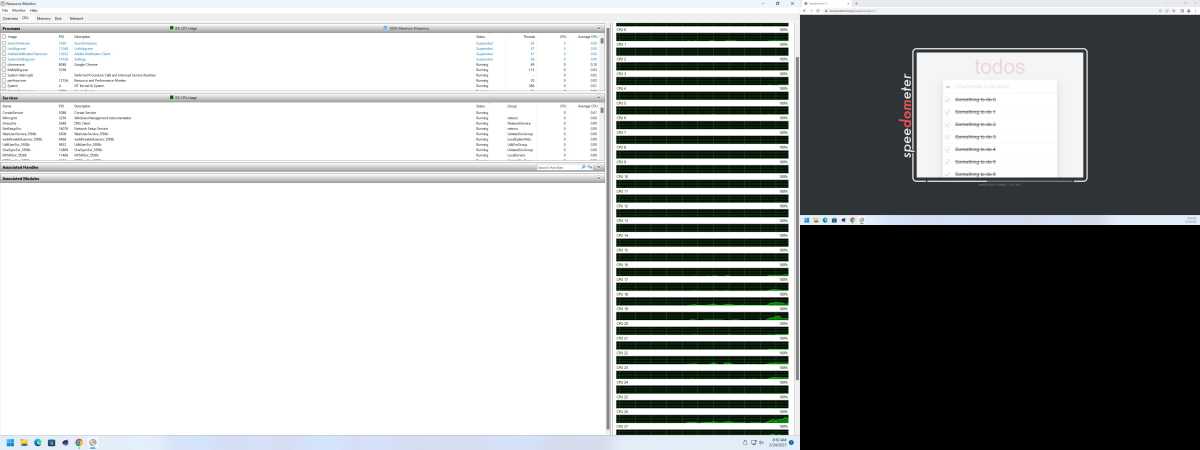
Gordon Mah Ung / PCWorld
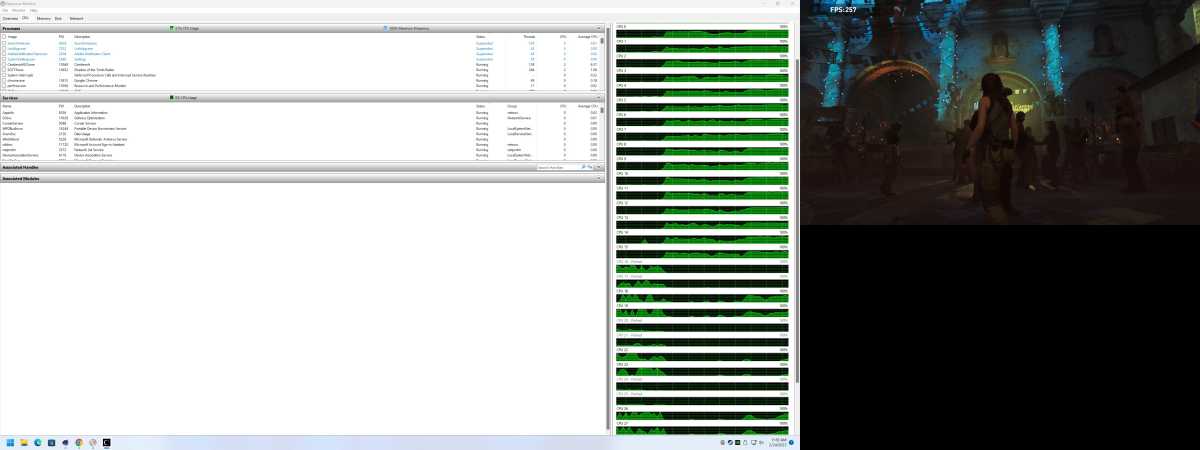
Gordon Mah Ung / PCWorld
In practice, the system will default to running programs on the non-stacked die—unless Windows (via the Xbox Game Bar) detects a game. Then that program and others get shunted over to the stacked die; the operating system will park the second die’s cores. The second die remains visible to the OS the whole time. AMD says that if you need more threads than available on the stacked die, then Windows will bring the non-stacked die back into service, albeit with some lost of clock speed on that die.
Want to run a non-gaming application on the stacked cache die? You can manually mark it as a game using the Xbox Game Bar. We actually did that with Cinebench R23, so that you can roughly see the difference in performance on the stacked die versus the non-stacked die.
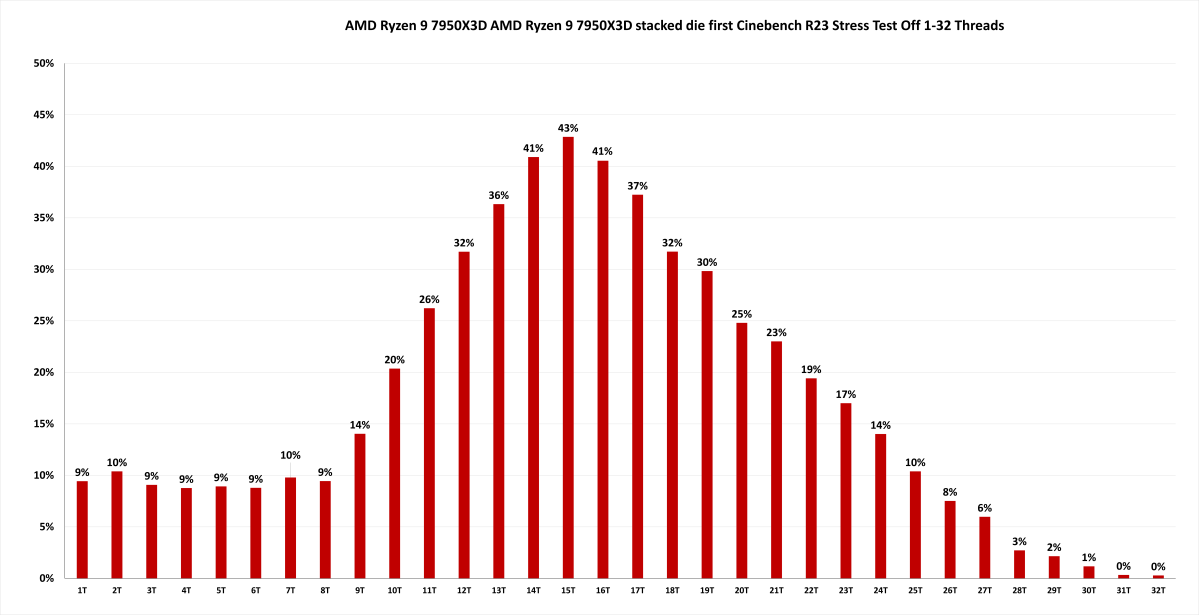
Gordon Mah Ung / PCWorld
While these results are a touch odd—note the performance increases in the middle—it’s clear overall that AMD’s method of handling the switch between its two dies is not analogous to Intel’s flipping between its performance and efficiency cores. It’s also more apparent that the asymmetrical design helps keep performance higher, given the drop in clock speeds when tasks extend across both dies.
The short of it is: You can’t expect to, say, run a game off the stacked die while streaming via OBS on the non-stacked die. Not yet, anyway. This is the situation at launch. AMD could (and likely will) continue to refine how tasks are assigned. In the meantime, if you’re itching for more manual control, you can go into the BIOS of your motherboard and change the priority order for the dies—e.g., “frequency” instead of “cache,” or going back to the default of allowing AMD’s driver to decide.
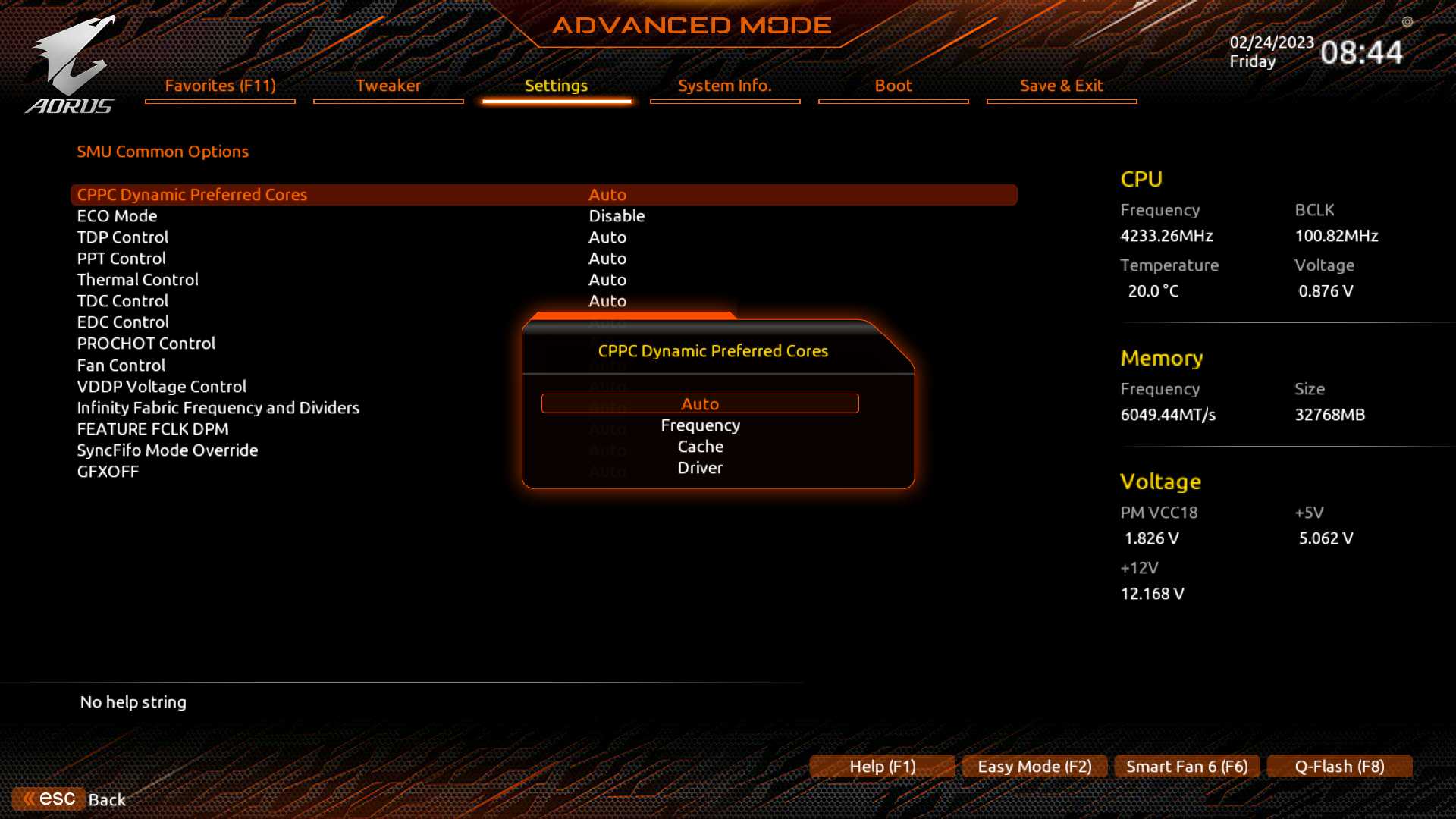
PCWorld
It delivers top-notch power efficiency
Power consumption is rarely the hill that comment wars are waged on. But even if you’re a person running tons of incandescent bulbs in your home without batting an eye, the 7950X3D’s power efficiency is still noteworthy. Despite its high-performance, it hits the juice relatively light, undercutting the 7950X, 13900K, and 13900KS by a substantial margin.

Gordon Mah Ung / PCWorld
During our Cinebench R23 multi-core test, the 7950X3D’s total system power draw dropped average wattage use by about 31 percent compared to the 13900K, and 36 percent versus the greedier 13900KS. It also slips under the 7950X by almost 7 percent. For the single-core benchmark, the chasm narrows to a far slimmer gap, but the 7950X3D remains the victor. The surprising loser: the 7950X, which we lauded at launch for power efficiency compared to Intel’s 12th-generation Core i9-12900K.

Gordon Mah Ung / PCWorld
Many people don’t buy CPUs for their power efficiency—probably flagship chips least of all. If you need high performance, then you’re buying high performance. Still, this represents a cool technical improvement, and for people in regions with extreme spikes in utility rates, it may well be a partial factor when choosing components.
So, should you buy the Ryzen 9 7950X3D?
AMD has definitely improved on its top 3D V-Cache offering—your games can get a hefty boost from the combo of an extra-fat L3 cache and slightly better single-core performance than the standard 7950X. And compared to the 5800X3D, the Ryzen 9 7950X3D’s performance is more even across the board.
But the key word is “can.” That boost depends on which games you play. The 7950X3D lacks dominance as a gaming chip. General apps performance varies, too. The Ryzen 9 7950X3D will be the right CPU for someone—but you’ll need to first review what you plan to do with it. It’s not an all-around winner.
So prospective buyers should ask themselves: Is world-class gaming performance your first priority? Can you stand slightly slower performance in heavily multithreaded applications and tasks? Is energy efficiency important to you? And do you have the money to spend on that compared to a 7950X or 13900K?
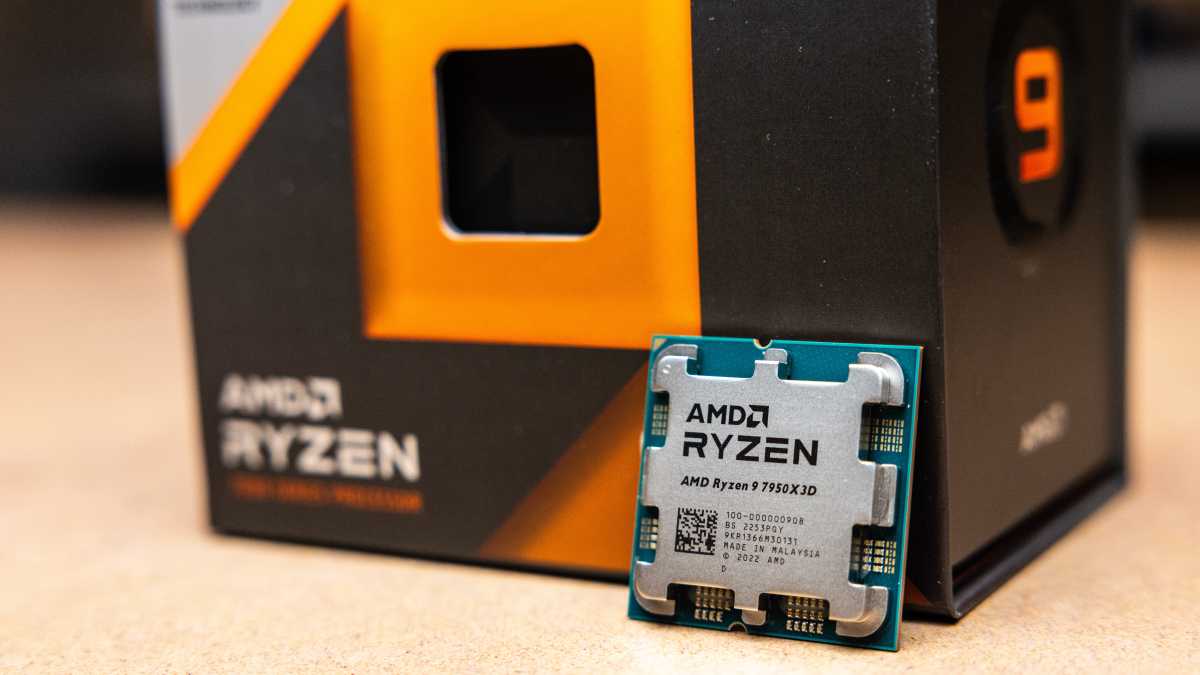
Willis Lai / Foundry
Because while spending more than $500 on a processor likely means money’s less of an issue, at launch, the Ryzen 9 7950X3D costs about $100 to $125 more than the 7950X. Street prices for the standard X part have drifted down. Likewise, the Intel Core i9-13900K is going for a similar amount, despite the looming threat of price hikes.
But even if you realize that another chip suits your needs better, the Ryzen 9 7950X3D is still incredibly exciting. AMD may not have come out the gate with an Intel-crushing entry, but round two for the company has historically been still part of building phase. It makes progress—and went from its eight-core, sixteen thread 5800X3D on a single die to now packing 3D V-Cache onto its higher-end dual-die parts.
The third generation is when AMD bulldozes—in every positive sense of that word. Ryzen 5000 on desktop absolutely crushed, and Ryzen 6000 in laptops cemented AMD as an option worth consideration. So the third set in the match could put the company back on top. For now, the $699 Ryzen 9 7950X3D offers ample gaming and productivity firepower alike to the right person.




